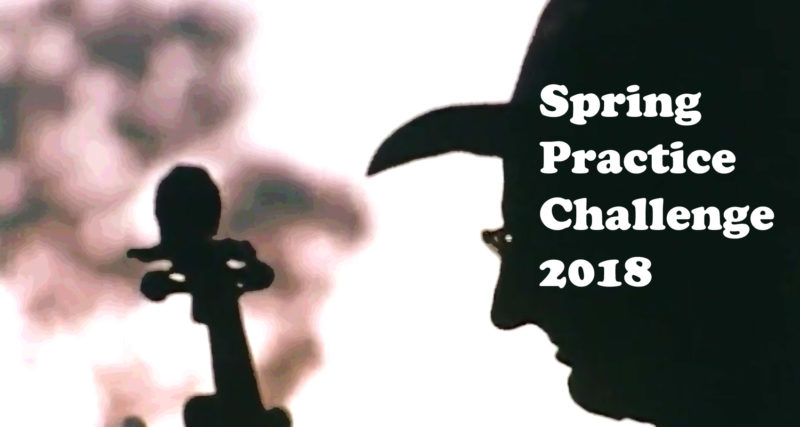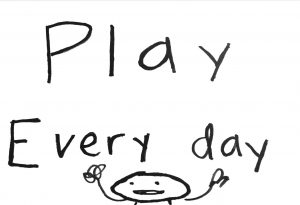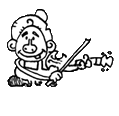Spring Practice Challenge

Welcome all to the Spring Practice Challenge!
From April 30-May 13, you and fiddle students around the world will make music a regular part of your life. The primary goal is to establish the habit of daily practice, and have the time of your life doing it!
Click here if you’d like to be an active “Practicipant”. Every few days, I will send an email to check in with you and cheer you on. Do you want to take the challenge but not get email from me? No worries. You’re still welcome to do the practice challenge on your own.

Set two goals
- Play every day.
- Recommended goal: 30 minutes a day.
- If you know in advance that you have to miss practice on a specific day, write that in on your calendar or practice tracker before the challenge begins.
- Pick one challenging tune or skill you want to improve. Some ideas:

Take three actions
And there are three actions I will ask you take:
- Track your practice.
- Print and download the practice calendar, or use your own wall calendar.
- Use a habit tracking app like Momentum.
- Monitor your performance through recording.
- At the beginning of the practice challenge (April 30), record yourself (audio or video) playing the challenging new tune or technique.
- At the end of the practice challenge (May 13), record the same thing. You’ll then listen to the recordings to help you understand what improved and what still needs work.
- Tell others what you are doing.
- Telling friends, family and roommates is a public commitment which will spur you on. You also signal to everyone that music is important to you and to respect the time you take for it.
- Click here to tell your friends on Facebook, “I’m so excited to be playing the fiddle every day for two full weeks!”You can join other FiddleHed students on the community forum and share your practice intentions and progress.
Before beginning the practice challenge, I recommend answering the five questions in the workbook below to focus your practice and strengthen your intention:
I’m asking you to take yourself seriously as a musician. What does that mean? You are a musician if you play every day. I encourage you to approach the practice challenge with a sense of adventure and fun. What a great thing it is to play music, and you’re going to do it every day!

That’s it. If you want to learn more about practice read the following articles:
How To Improve Your Fiddling Through Recording
Remember, taking yourself seriously as a musician doesn’t mean that you don’t have fun. I’m certain that if you find a way to play every day you will enjoy it a lot more.
Thanks for taking part, now go fiddle with it…
⤠Jaso’n
